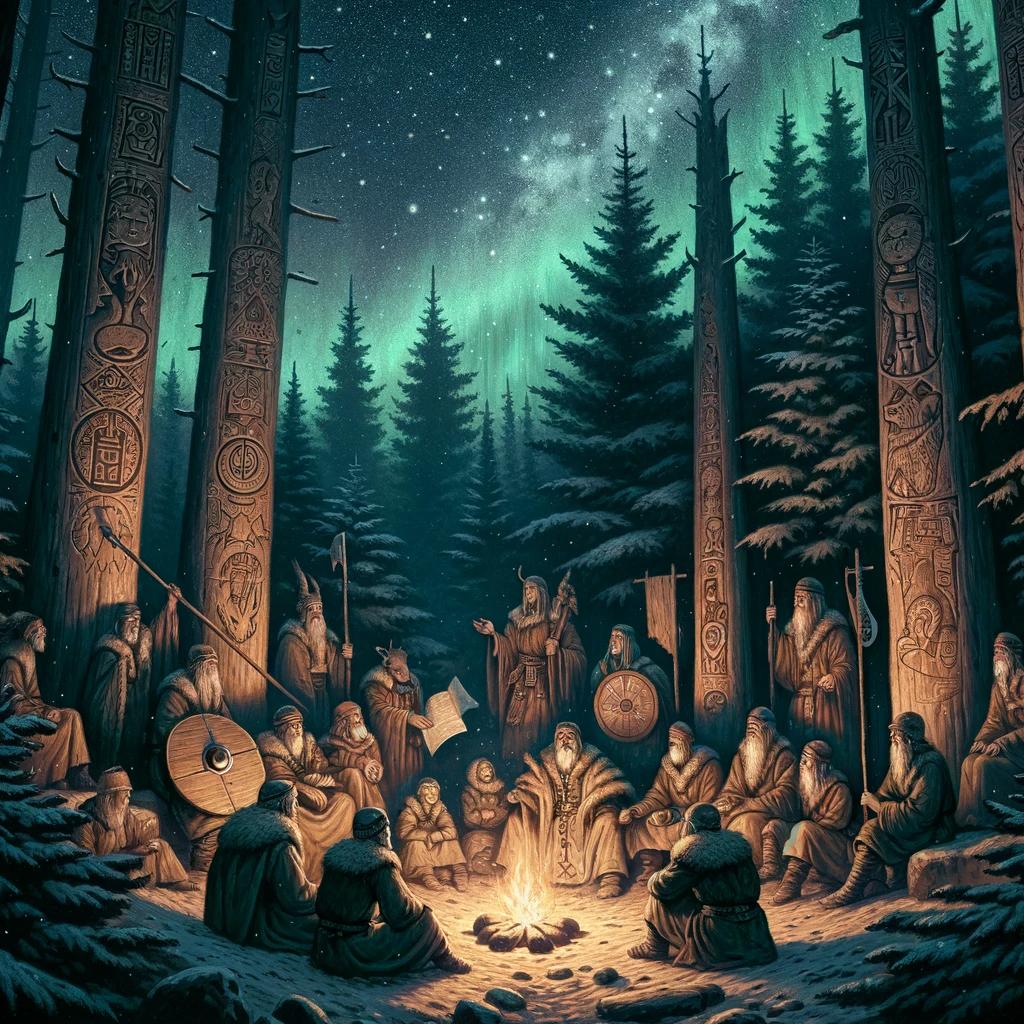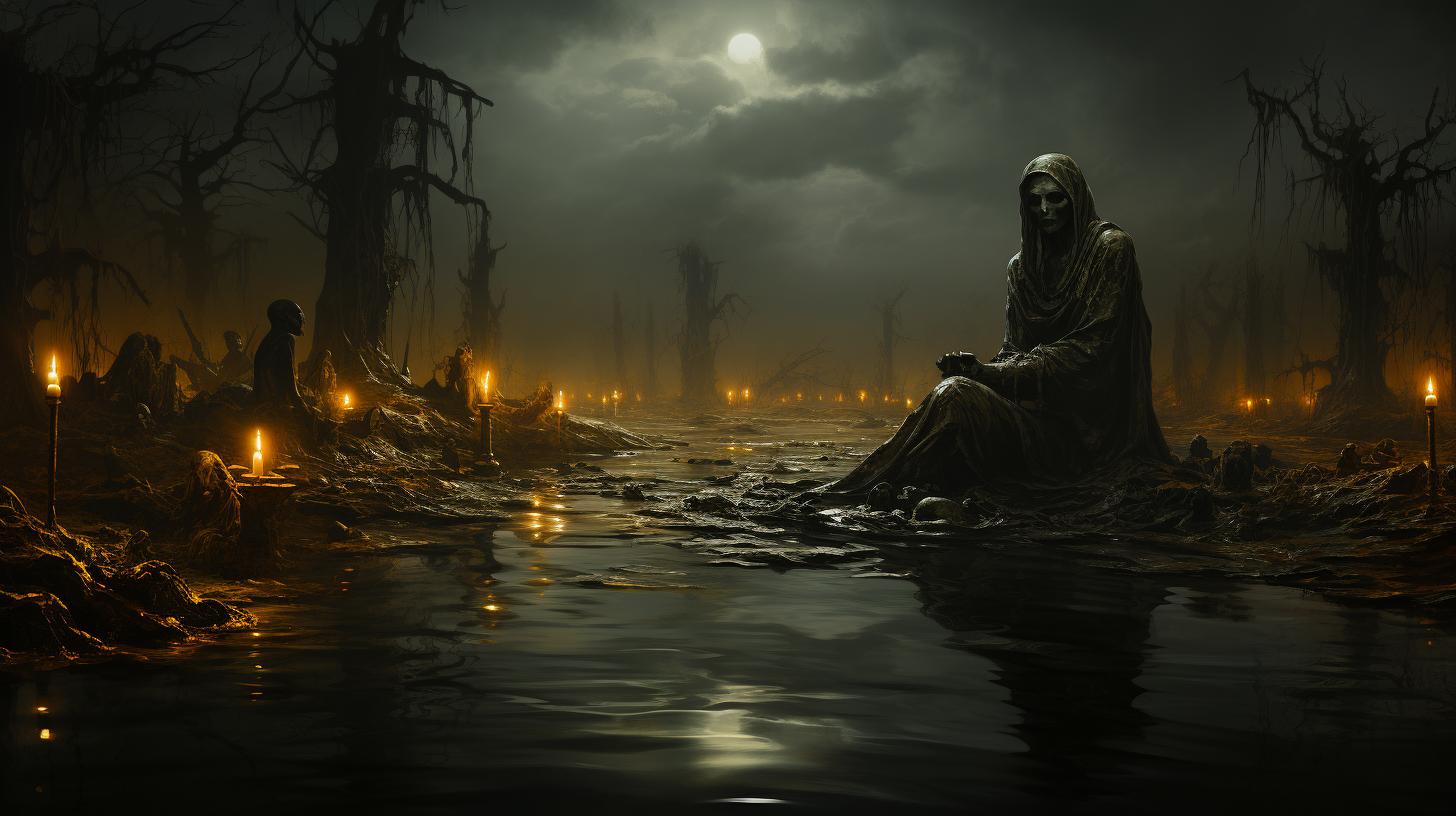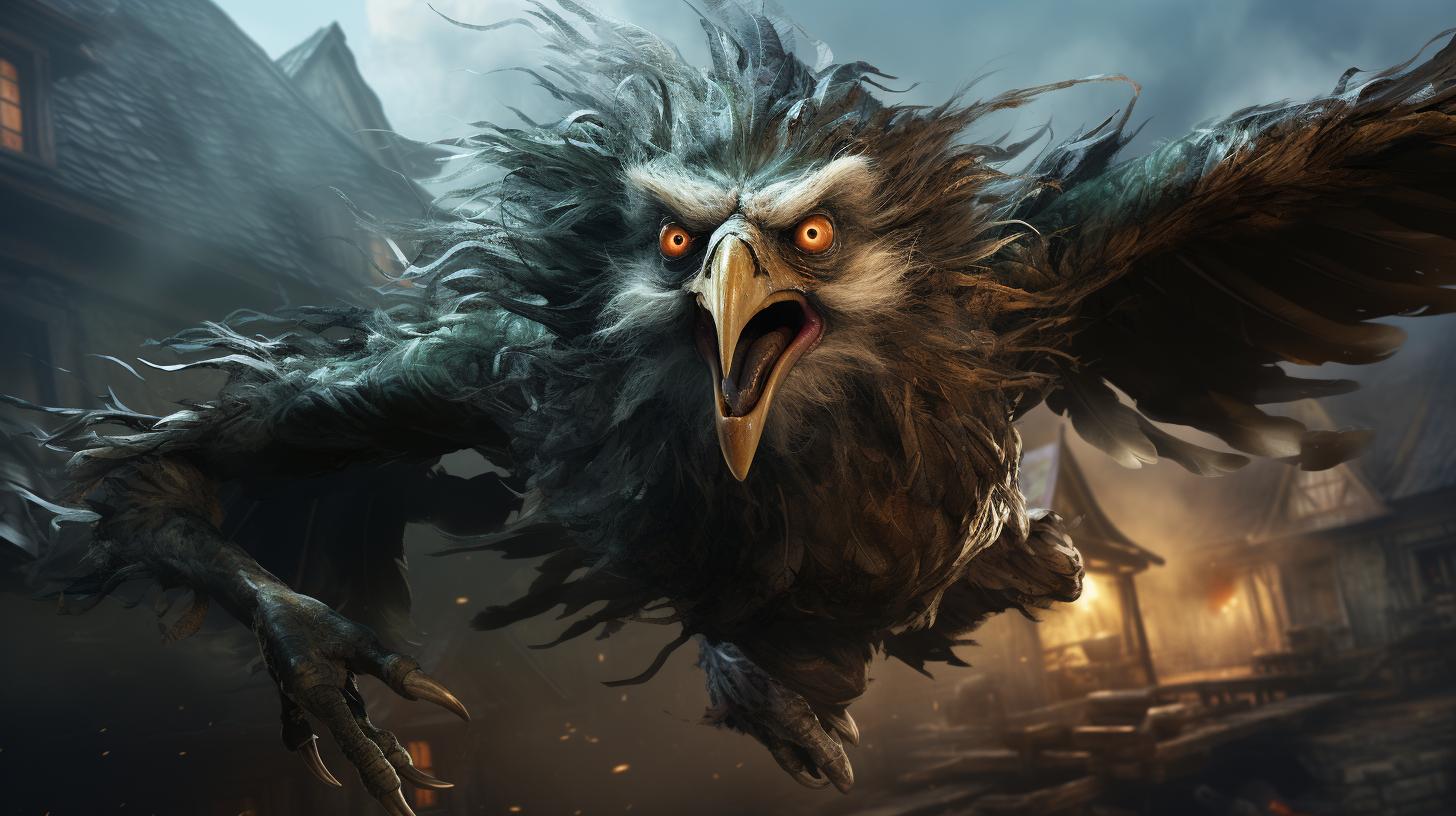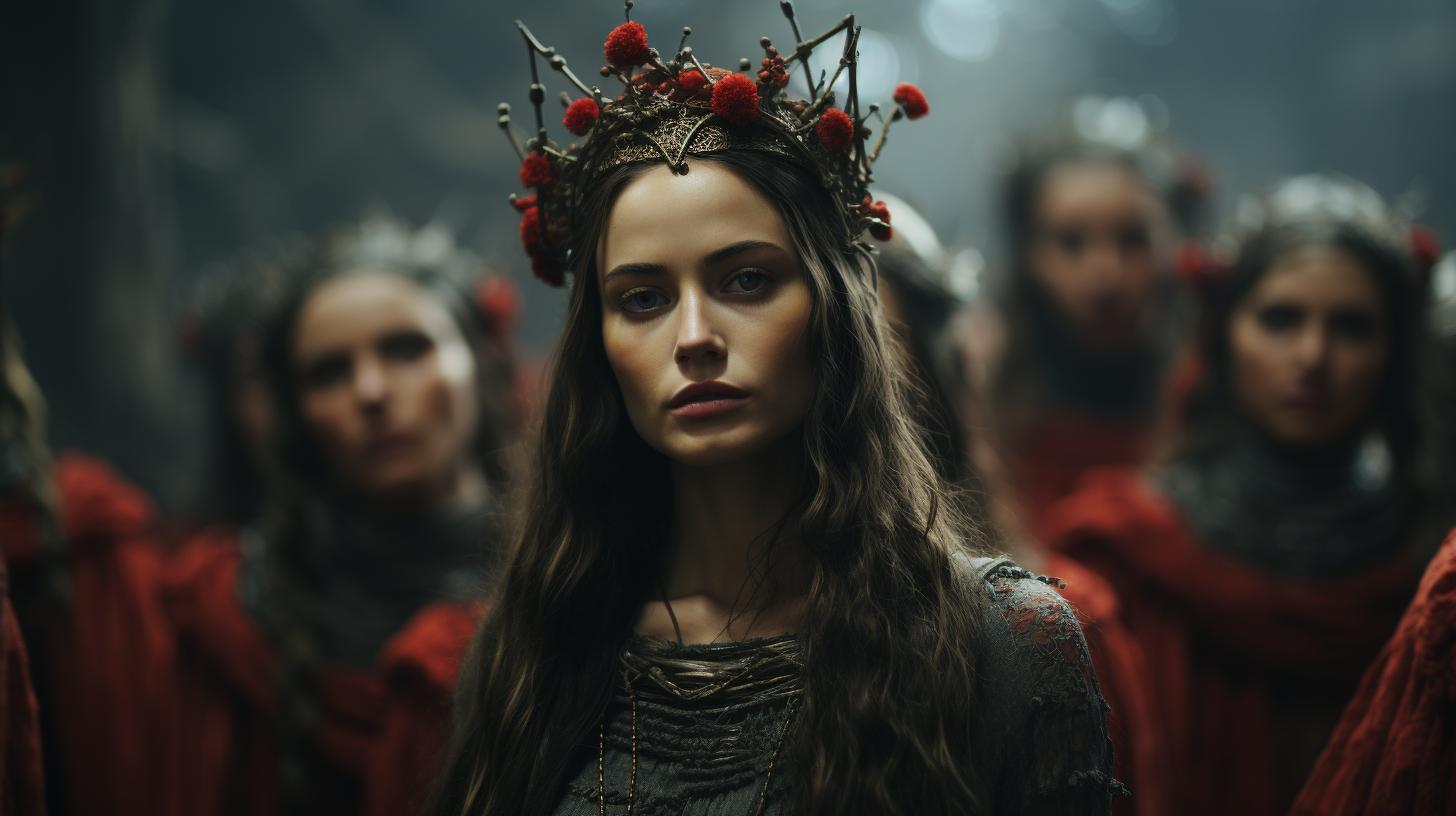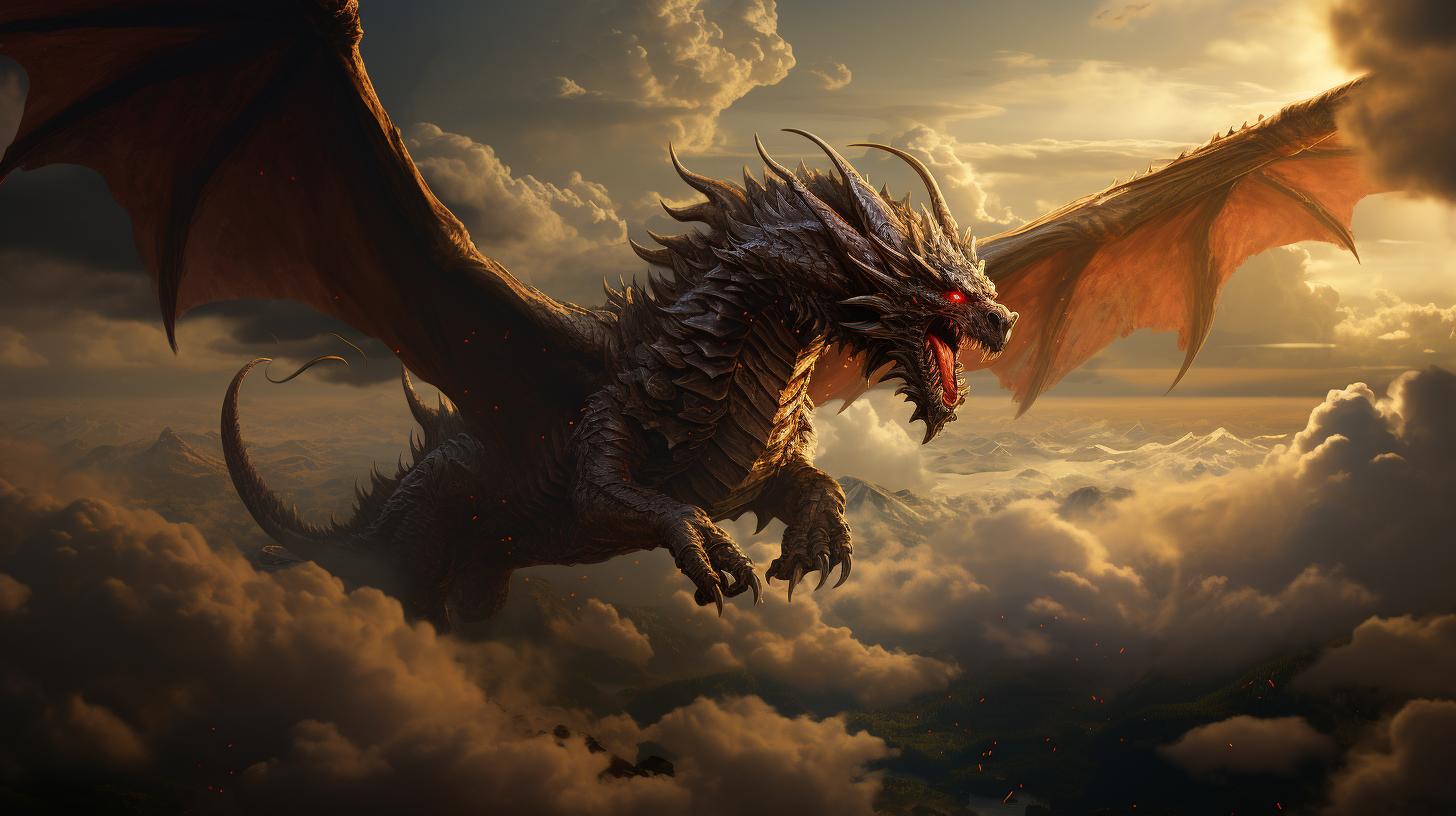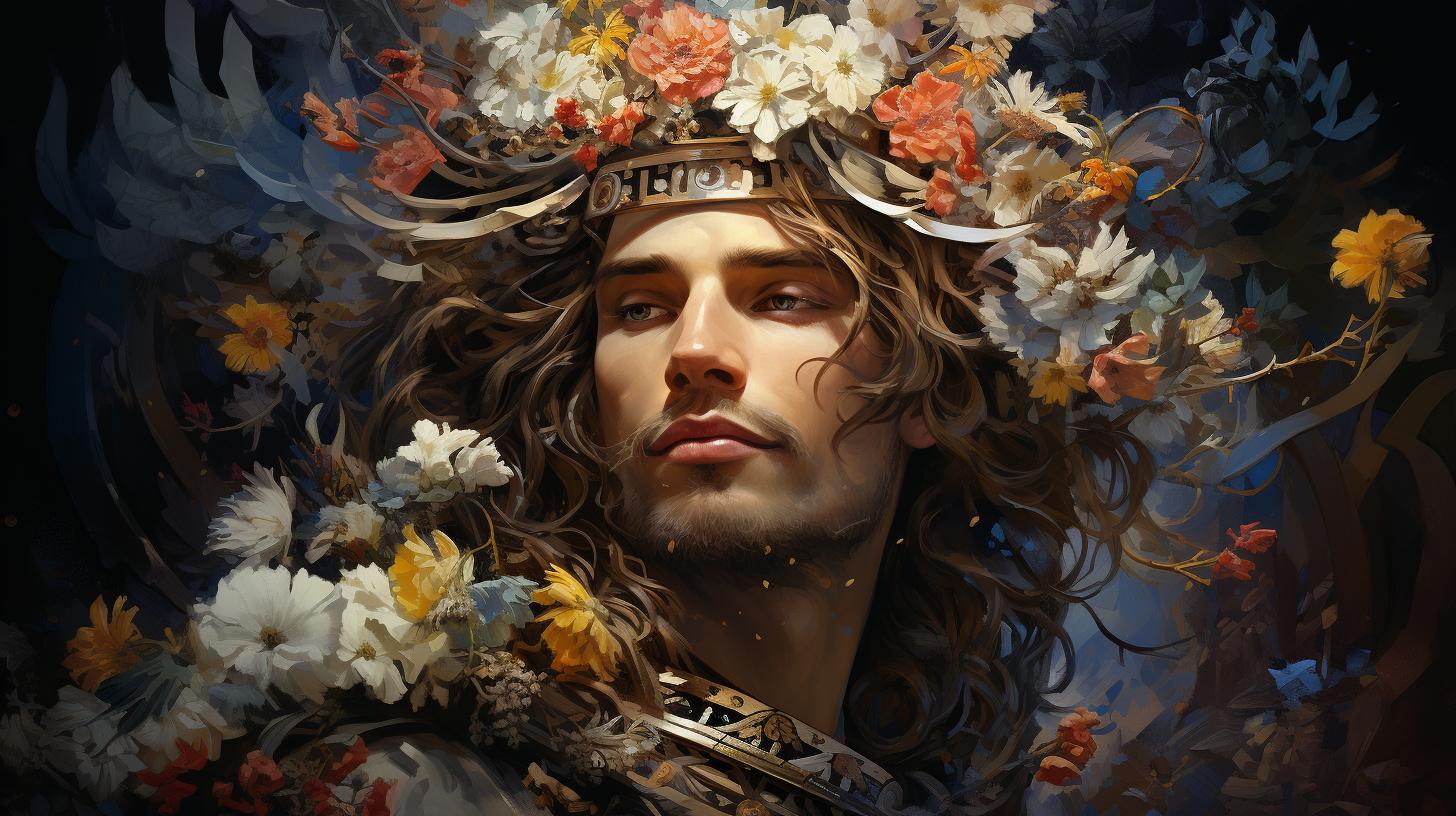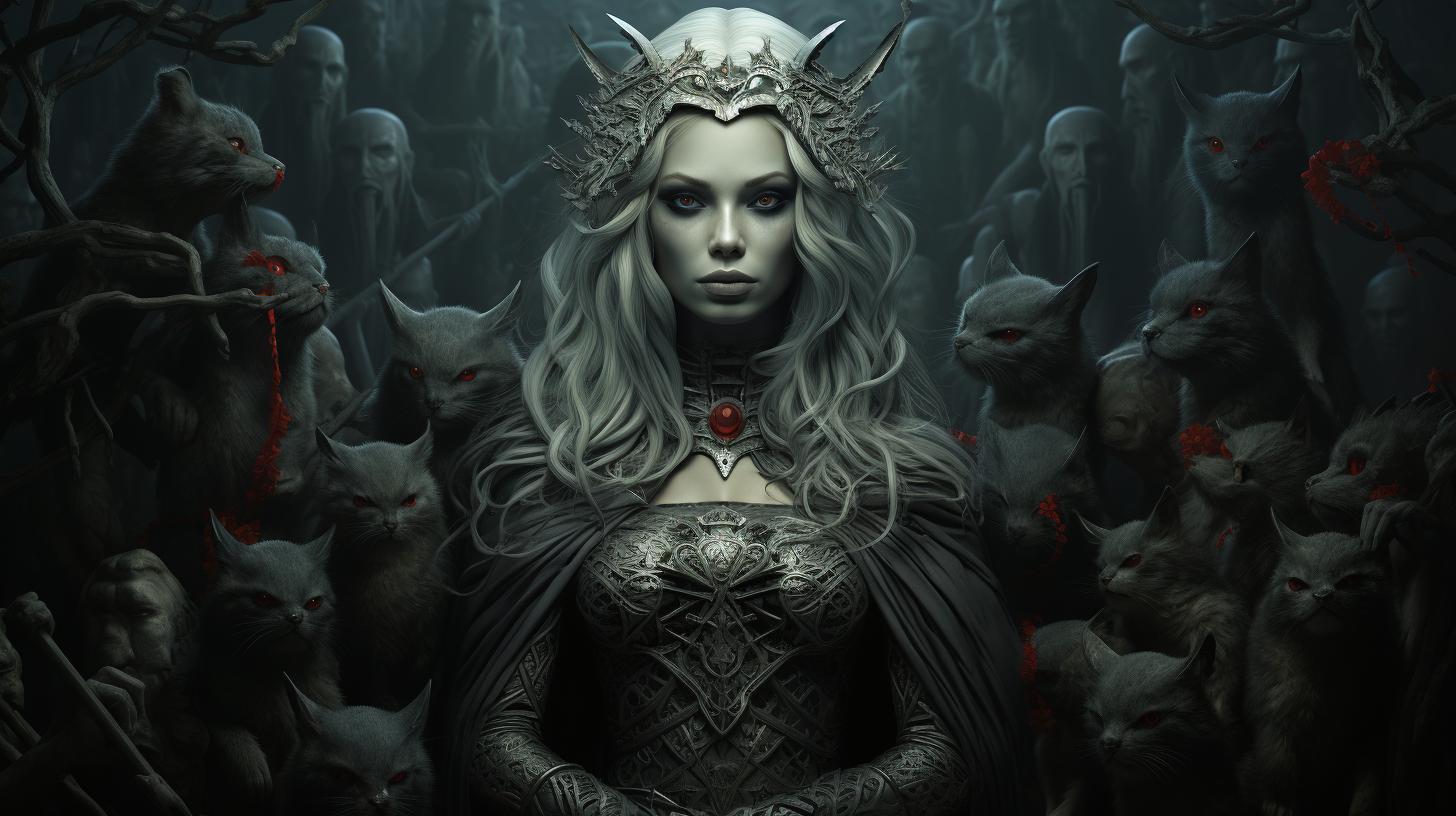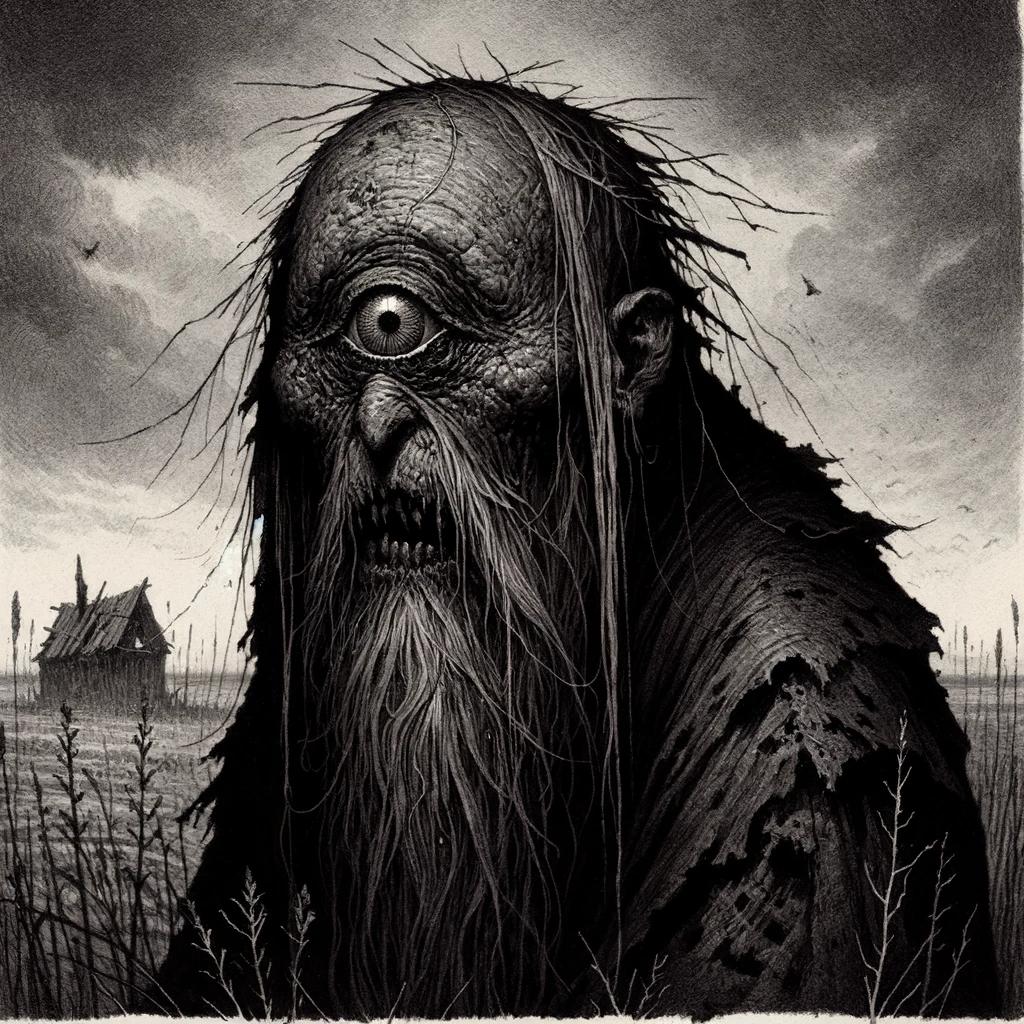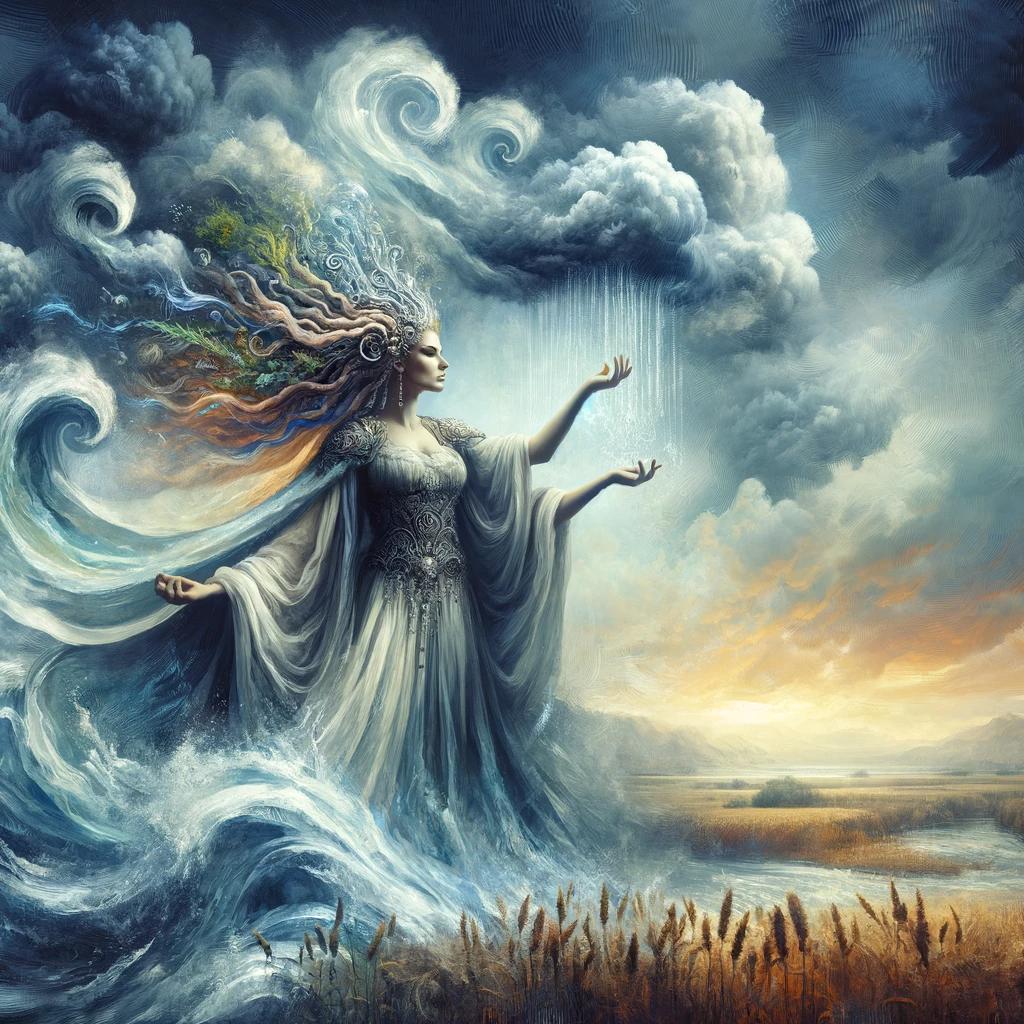Where Did Slavic Mythology Come From: Unveiling the Origins and Rich Traditions
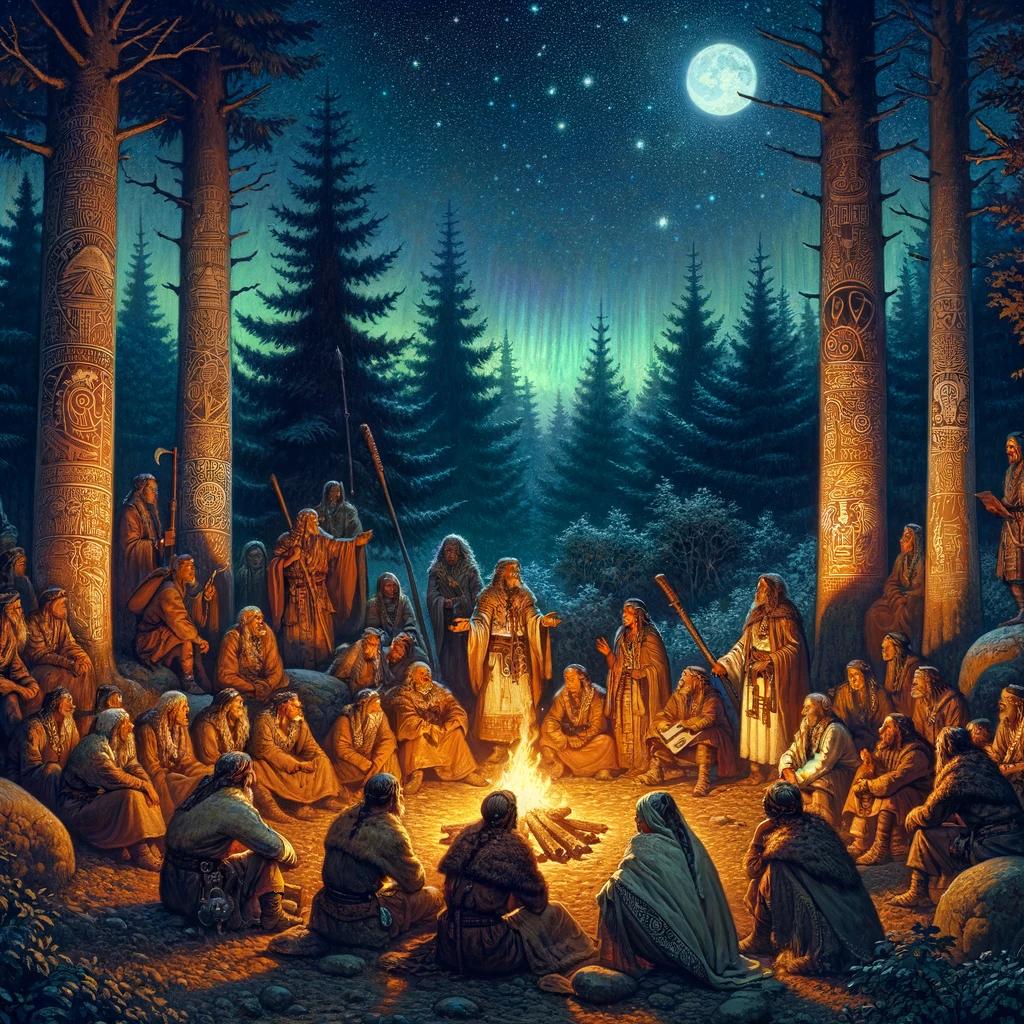
Slavic Mythology has a rich history dating back to the ancient Slavic tribes. While there are no original sources available, information has been compiled from secondary sources, primarily written by monks.
This mythology originated from the Proto-Indo-European period and developed as the proto-Slavic tribes divided into Eastern, Western, and Southern Slavs, each with their own mythologies. In this article, we will explore the origins, gods, myths, rituals, and the influence of Slavic Mythology on modern pop culture.
The History of Slavic Countries: Tracing the Roots of Slavic Mythology
The origins of Slavic Mythology can be traced back to the ancient Slavic countries, encompassing a vast region of Eastern Europe. These countries include present-day nations such as Russia, Ukraine, Poland, Belarus, Czech Republic, and many more.
The history of these countries holds the key to understanding the roots of Slavic Mythology.
Early Slavic tribes inhabited these lands long before written records were prevalent. The knowledge about their mythology and beliefs has been primarily derived from secondary sources, mainly accounts written by monks who sought to document and preserve the ancient traditions.
As the tribes evolved and migrated, different regional variations of Slavic Mythology emerged. The Eastern Slavs, including the Russians, Ukrainians, and Belarusians, developed their unique mythological pantheon. The Western Slavs, such as the Polish, Czechs, and Slovaks, also developed their distinct set of deities and folklore.
Furthermore, the Southern Slavs, including the Serbians, Croatians, Bulgarians, and others, had their own mythology that reflected the influences of neighboring cultures.
The history of Slavic countries is intertwined with invasions, migrations, and cultural exchanges with various civilizations such as the Vikings, Byzantines, Mongols, and later, the influence of Christianity.
These historical factors played a significant role in shaping the evolution and transformation of Slavic Mythology over time.
Tracing back the roots of Slavic Mythology also involves analyzing the prehistoric Proto-Indo-European period.
During this ancestral era, Slavic culture shared common roots with other Indo-European cultures, including Greek, Roman, Celtic, and Norse mythologies. These ancient connections offer insights into the mythological motifs and themes that have resonated throughout the history of Slavic countries.
Exploring the history of Slavic countries provides a broader context for understanding the rich tapestry of Slavic Mythology. By examining the interconnectedness of cultural, historical, and ancestral influences, we can gain a deeper appreciation for the diverse and captivating myths and legends that have shaped the belief systems of the Slavic people throughout the centuries.
Slavic Gods: Exploring the Deities of Slavic Mythology
Slavic Mythology is replete with a pantheon of fascinating gods and goddesses, each with their unique attributes and roles. These deities played a significant part in shaping the beliefs and practices of the Slavic peoples.
One of the prominent gods in Slavic Mythology is Perun, the god of thunder and lightning. He is depicted as a powerful warrior wielding a mighty axe, symbolizing his ability to protect the Slavic people from evil forces.
Perun’s thunderbolts were believed to bring rain for the crops and protect against malevolent spirits.
Another significant deity is Svarog, the heavenly blacksmith and the father of all gods.
Svarog is associated with fire and the sun, representing creation and transformation. He is often depicted as a wise old man, shaping the destiny of the world through his divine craftsmanship.
Svarog’s influence extends to various aspects of life, including craftsmanship and the cycle of the sun.
Veles, on the other hand, is the god of earth, forests, and the underworld.
Often portrayed as a horned serpent or a bear, Veles is associated with fertility, abundance, and the protection of animals. He reigns over the subterranean realm, where he controls the natural cycles of life and death.
Among the female deities, Mokosh holds a prominent position. She is the goddess of fertility, women, and the Earth. Mokosh is often depicted as a matronly figure, representing the nurturing and life-giving aspects of nature.
She is associated with the protection of women during childbirth and the harmony of the natural world.
These gods and goddesses, along with numerous others like Rod, Jarilo, Marzanna, and Zorya, form a complex and diverse pantheon in Slavic Mythology.
Each deity possesses distinct domains and characteristics, reflecting the reverence and awe that the Slavic people held for the forces of nature and life.
Throughout Slavic mythology, these gods became integral to both personal and communal rituals.
Their worship involved offerings, prayers, and sacred rites to seek their favor and guidance. The gods were seen as mediators between the mortal world and the divine, embodying the power and essence of natural forces.
By exploring the deities of Slavic Mythology, we gain insight into the beliefs, values, and spirituality of the Slavic peoples throughout history. Their stories and divine characteristics continue to captivate imaginations and provide a rich tapestry of cultural heritage that remains an integral part of Slavic identity today.
Myths and Legends: Stories from Slavic Mythology
Slavic mythology is brimming with captivating myths and legends that offer a glimpse into the beliefs and imaginations of the ancient Slavic tribes. These stories, passed down through generations, explore the origins of the world, the adventures of gods and heroes, and the interaction between the divine and human realms.
One popular tale from Slavic mythology is the story of Czernobog, a dark and malevolent deity associated with death and misfortune. According to the myth, Czernobog waged a perpetual battle with his brother Belobog, the god of light and goodness.
This eternal struggle between light and darkness served as a metaphor for the cosmic balance of the world.
Another enthralling legend involves the triumph of Svarog, the Slavic god of celestial fire and blacksmithing, over the serpent-like creature known as the Black Serpent.
This epic battle symbolizes the victory of order and creation over chaos and destruction, illustrating the Slavic belief in the constant struggle between opposing forces.
The tale of Veles, a trickster god associated with the underworld and earth, showcases the complexities of Slavic mythology.
Veles often clashes with Perun, the god of thunder and sky, in a never-ending rivalry. These ancient fables provide insights into the Slavic understanding of the natural world and the interplay between forces of nature.
Slavic mythology also includes stories featuring mystical creatures such as Leshy, a forest guardian, and Rusalka, a water nymph. These supernatural beings personify the connection between humans and nature and reflect the deep reverence Slavic people held for their natural surroundings.
These captivating myths and legends from Slavic mythology continue to inspire writers, artists, and filmmakers today. Their enduring appeal lies in their ability to convey universal themes of love, heroism, and the eternal struggle between good and evil.
Whether told around the campfire or enjoyed in the pages of a book, these stories serve as a testament to the enduring power of Slavic mythology and its intricacies.
Creation Myths: Unraveling the Origins of the Slavic World
Slavic mythology holds a fascinating array of creation myths that shed light on the origins of the Slavic world.
These myths offer intriguing narratives about the birth of the universe, the emergence of the gods, and the creation of humans and animals. Let’s delve into some of these captivating stories:
The Darkness and the Cosmic Egg
According to one prominent creation myth, the Slavic world initially existed in a state of darkness.
From this darkness arose a cosmic egg that contained the powerful deity Svarog, symbolizing the divine life force. The egg represented the potential for creation and the birth of a new world.
As the egg hatched, the world began to take shape, bringing light, order, and life to the universe.
The Formation of the World
As the cosmic egg cracked open, Svarog, the Blacksmith God, forged the elements of the universe. He shaped the sky, the land, and the waters, giving them form and purpose.
Each aspect of the world held divine significance, mirroring the interconnectedness between the natural and the divine realms.
The Divine Family
Among the Slavic gods, a pantheon emerged, consisting of powerful deities associated with various aspects of life and nature. Rod, the god of family and kinship, represented the ancestral ties that bound the Slavic people together.
Perun, the Thunder God, embodied strength and protection, commanding the forces of thunder and lightning. Veles, the Serpent God, ruled over the underworld and was often depicted as a trickster figure.
These deities, among others, each played unique roles in shaping the Slavic world and influencing human existence.
Trials and Triumphs
Slavic creation myths also encompass tales of epic battles and victories. One renowned story tells of Svarog’s triumph over a malevolent black serpent named Czernobog, symbolizing the victory of light over darkness.
Another mythical event narrates the struggle between Veles and Perun, as the Thunder God defeated the Serpent God to restore balance and cosmic harmony.
These creation myths form a vital part of Slavic mythology, providing insight into how the world was believed to have come into being and setting the foundation for the religious and cultural beliefs of the Slavic people.
Rituals and Traditions: Sacred Practices in Slavic Mythology
Slavic Mythology is deeply woven into the fabric of ancient Slavic cultures, and rituals and traditions played a crucial role in connecting people with their gods and the natural world.
These sacred practices were often influenced by agricultural cycles and lunar cycles, reflecting the close relationship between the Slavic people and the land they inhabited.
One significant ritual in ancient Slavic religion was Velja Noc, a night when the spirits of the deceased were believed to roam the earth. To ward off malevolent spirits, shamans would disguise themselves in costumes, performing dances and chants to ensure the safety of the community.
This ritual was a powerful way to honor the dead and protect the living.
Another important celebration in Slavic Mythology was Kupala, a festival associated with fertility and the marriage of deities. This lively event involved lighting bonfires, leaping over them, and even burning a straw effigy, representing the symbolic end of the old year and the beginning of a new cycle.
These rituals were performed with the hope of ensuring bountiful harvests and promoting the growth of crops, essential for the sustenance of the community.
The conclusion of the harvest season also had its special ceremony in Slavic Mythology. Priests would construct a structure made of wheat, forming a symbolic representation of abundance. Through prayers and rituals, they sought the gods’ favor and blessings for a fruitful harvest in the coming year.
These agricultural rituals demonstrated the Slavic people’s deep connection to the land and their reliance on the divine for sustenance.
In addition to agricultural celebrations, Slavic Mythology encompassed various rites and practices related to major life events. These included birth rituals, marriage ceremonies, and funeral rites. Each of these rituals had specific customs and beliefs associated with them, guiding the Slavic people through important transitions and providing a sense of spiritual connection and meaning.
The rituals and traditions in Slavic Mythology were not only religious in nature but also served as a way to foster community bonds and preserve cultural heritage. These practices brought people together, allowing them to share experiences, stories, and beliefs, reinforcing a sense of shared identity.
Today, the ancient rituals and traditions of Slavic Mythology continue to inspire and captivate the imagination of people around the world. They have found their way into modern cultural expressions, including literature, art, and even contemporary celebrations.
By keeping the rituals and traditions alive, we honor the legacy of our ancestors and connect with the rich tapestry of Slavic Mythology that has shaped our cultural heritage.
Influence on Culture: Slavic Mythology in Modern Pop Culture
Slavic Mythology has had a profound impact on modern pop culture, captivating audiences through various mediums such as books, movies, TV shows, video games, and music.
Its ancient tales and fascinating deities continue to inspire and entertain people worldwide.
1. Literature: Many contemporary authors draw inspiration from Slavic Mythology, incorporating its themes and characters into their works.
Novels, such as Andrzej Sapkowski’s “The Witcher” series and Katherine Arden’s “Winternight Trilogy,” transport readers into a world where mythical creatures and ancient gods come to life.
2. Film and Television: Slavic Mythology has found a prominent place in the film and television industry, captivating audiences with epic stories and breathtaking visuals.
Movies like “Night Watch” and “Day Watch” delve into the battle between light and dark forces from Slavic folklore, while TV shows like “American Gods” and “The Terror: Infamy” explore the fusion of mythological tales with contemporary narratives.
3. Video Games: The rich tapestry of Slavic Mythology has become a wellspring of inspiration for video game developers. Titles like “The Banner Saga” and “God of War” feature characters and creatures rooted in Slavic folklore, immersing players in epic quests and mythical realms.
4. Music and Art: Slavic Mythology has influenced musicians and artists, inspiring them to create artwork and compositions that embody its mystical essence. From orchestral compositions to folk-influenced music, artists weave Slavic mythology into their creative expressions, connecting audiences to the ancient realms of gods and heroes.
5. Festivals and Events: Various cultural festivals and events celebrate Slavic Mythology, offering a platform for enthusiasts to come together and experience the richness of this ancient tradition. These gatherings often feature performances, exhibitions, and workshops, allowing participants to explore and engage with the mythological heritage.
As the world becomes increasingly interested in diverse mythologies and ancient cultures, Slavic Mythology continues to captivate and intrigue. Its enduring influence in modern pop culture is a testament to its enduring appeal and the power of its stories.
.











